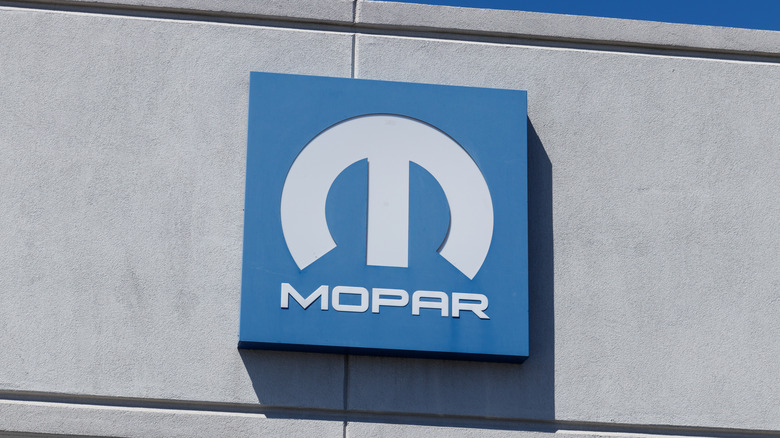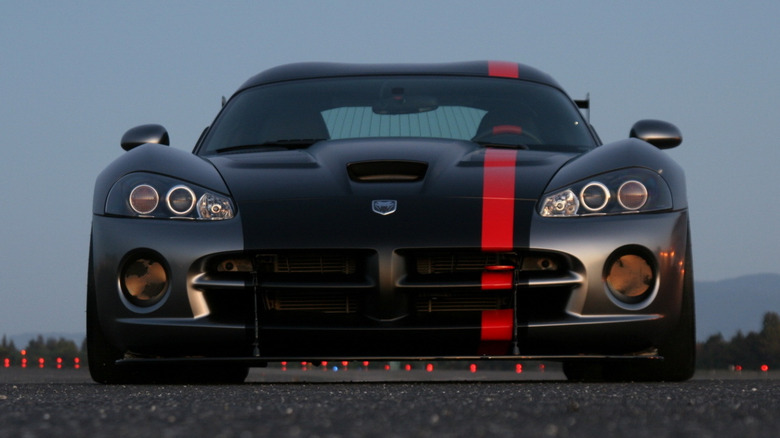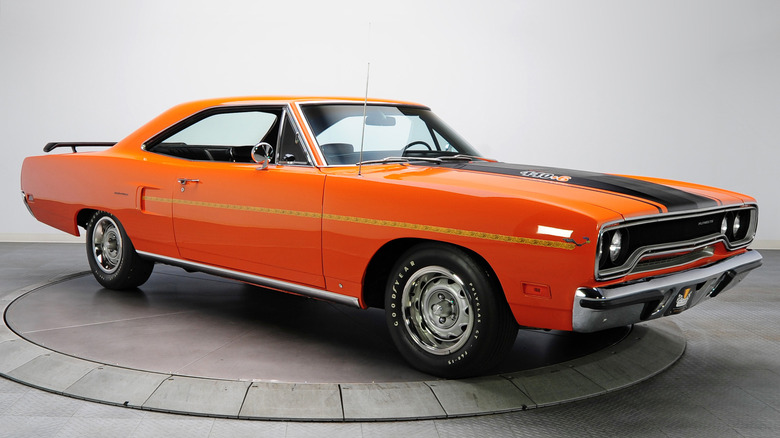The Fascinating History Of Mopar: What It Means And Which Cars Count
A lot of weird terms are pretty synonymous with American car culture, and if you ever make it to a Cars and Coffee meet, you'll probably hear people shouting about lemons, grease monkeys, and Mopar. Mopar is a term that's almost as synonymous with American car culture as Mustangs and pickup trucks, but have you ever wondered where the phrase actually comes from?
Mopar is a term tied to everything Chrysler, which today is a branch of the automotive giant, Stellantis. That wasn't always the case, though, and back in the 1930s, Chrysler was just a plucky American giant out to get as many people as possible on the roads, and make a ton of money in the process.
As well as selling cars and engines, Chrysler wanted a new product that it could offer owners, something that they would all need to keep in their car's engine and replace from time to time, which would bring them crawling back to Chrysler for more. That product was antifreeze, which was launched under the Chrysler Motor Parts Corporation way back in 1937.
Where does the term Mopar come from?
The Chrysler Motor Parts Corporation was formed, but the name was shortened for the antifreeze products that it began shipping in 1937. Motor Parts morphed into the portmanteau Mopar for the first products, and by the 1940s the company was shipping all manner of parts and accessories under the name. The company offered components for other Chrysler brands, like Dodge and Plymouth, and even tried its hand at weapons and vehicles for the front line in the Second World War, reports SlashGear.
In the years since, the brand grew from strength to strength, with Mopar sponsoring race teams and even offering up its own packaged models in cars like the Dodge Dart and Plymouth Barracuda Hemi. Now, the name can be linked to all manner of American brands, as MotorTrend explains:
When talking with an enthusiast, a Mopar car is one built by one of the original Chrysler Corp. brands, which in order of ascendancy are Plymouth, Dodge, DeSoto, Ram, Chrysler, and Imperial. Out of those original legacy brands, only Dodge, Ram, and Chrysler remain. These legacy brands aren't the only ones considered Mopars: Chrysler bought the AMC, Eagle, and Jeep brands in 1987, and as a result Mopar cognoscenti welcomed Jeep (the only one of the three to survive) as part of the modern Mopar brand family.
These days, Mopar makes components for every Chrysler brand, but there's one category of cars that will always be synonymous with the parts company: muscle cars.
Not all muscle cars are Mopar
The obvious differentiator between a regular muscle car and a Mopar muscle car is that it must be made by a brand tied to Chrysler. You're never going to hear anyone describe their Ford Mustang as being filled with Mopar, unless something really weird has happened, but you might hear of someone fitting Mopar components to an old Plymouth.
This is because Mopar cars are only made by brands in the original Chrysler Corporation stable, which includes Chrysler (obviously), Dodge, Ram, Plymouth, Imperial, and DeSoto, adds SlashGear. In 1987, the American Motors Corporation was added to the mix, which meant that AMC, Eagle, and Jeep were all added to the lineup.
When it comes to finding which muscle cars are Mopar, you have to look at Plymouth and Dodge. In the Plymouth lineup, the Mopar muscle cars include the Duster (V-8 only), Road Runner, GTX, Superbird, Belvedere, Fury (B-Body only), Barracuda (A-Body), and 'Cuda (E-Body) models. Dodge, meanwhile, offers up the Demon (V-8 only), Polara, Coronet, Super Bee, Charger, Daytona, Dart (V-8 only), and Challenger as its Mopar contenders.
Today, Mopar services much more than classic muscle cars. Since coming under the Stellantis umbrella in 2021, it has branched out to become the de facto supplier of original equipment and aftermarket accessories for the automaker in North America.


